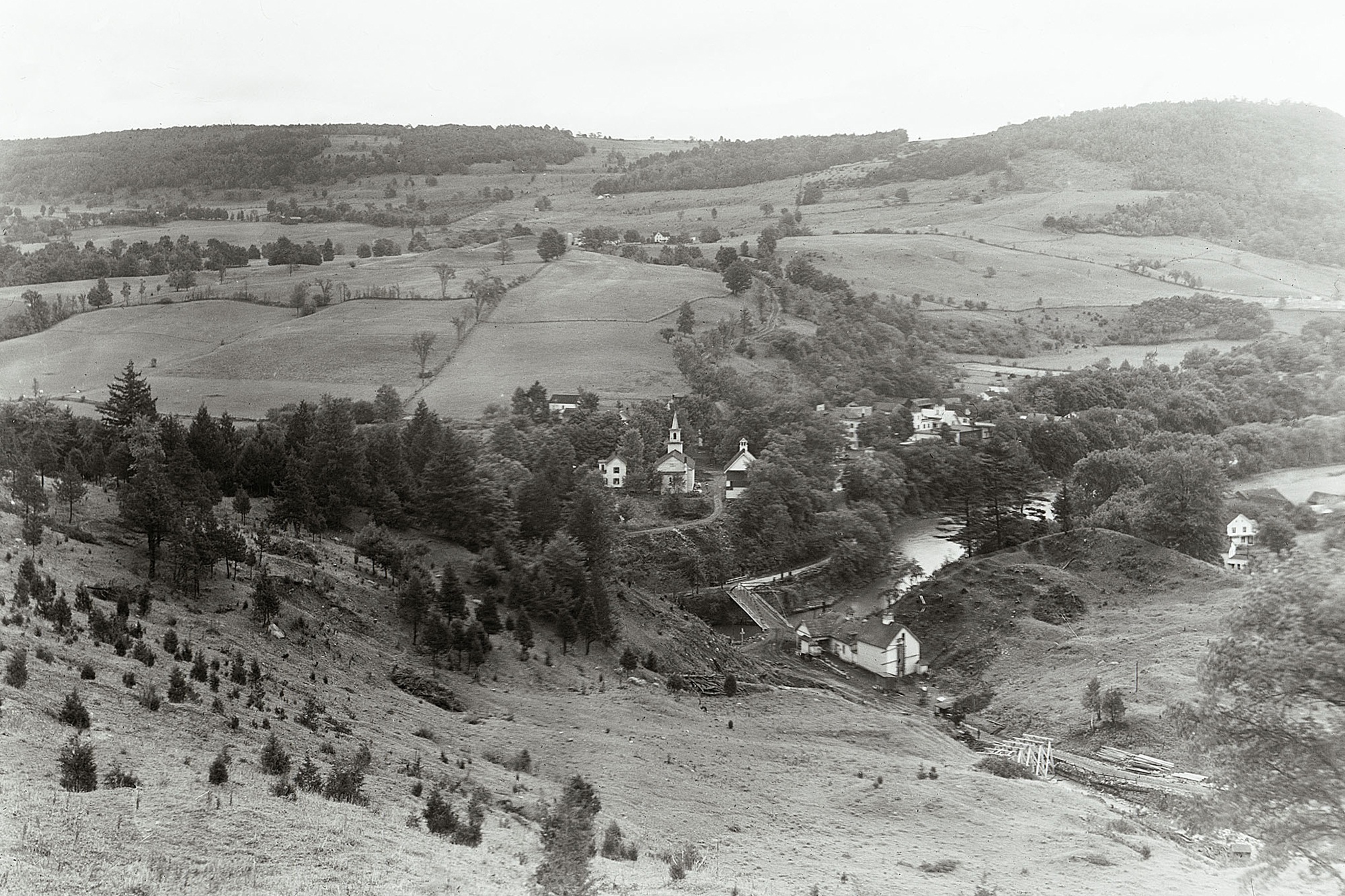Six large reservoirs span the Catskills region of New York. To create them, more than 20 villages in the region were destroyed from 1907 to 1967. The 60-year demolition in service of the watershed that now serves New York City sowed seeds of distrust and resentment between rural New Yorkers and the city that remain relevant to this day.
In surrounding towns, memories remain. Around the reservoirs, small signs mark the spots closest to where villages that once stood: Ashokan, Olive, Gilboa, Brodhead Bridge. In one reservoir, the foundation of a building is just visible when the water is low. And there’s an oft-circulated rumor that when the conditions are just right, you can see a church spire in the middle of a reservoir. It’s just that, a rumor, because records show the towns were razed. But its persistence demonstrates a powerful collective memory of what no longer exists, and an ongoing tension between the agricultural communities surrounding the watershed and the city it serves, some 150 miles away.
It was the town markers that first motivated Anna Lehr Mueser, a doctoral candidate in history and sociology of science, to study the aftermath of the construction of the reservoirs and what was lost along the way.
“There is sort of intriguing gap between what's remembered and what is sort of empirically knowable about the past,” Mueser says. “I am really curious to understand how people relate to the past in a place that is so profoundly transformed by the environmental-technical system of the water supply.”
Collective memory is important to Mueser’s project. She explains that collective memory a collection of recollections, impressions, and narratives about the past that individuals and communities can use to frame their understandings of their shared past. Though aspects of collective memory may not always be factually true, they nonetheless hold deep meaning.
This story is by Lauren Rebecca Thacker. Read more at OMNIA.








